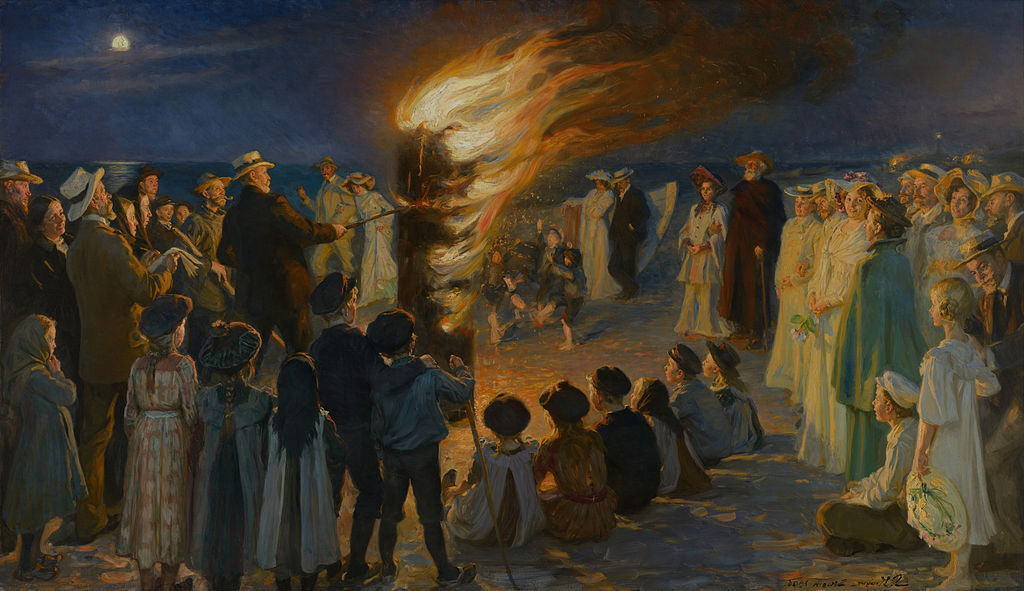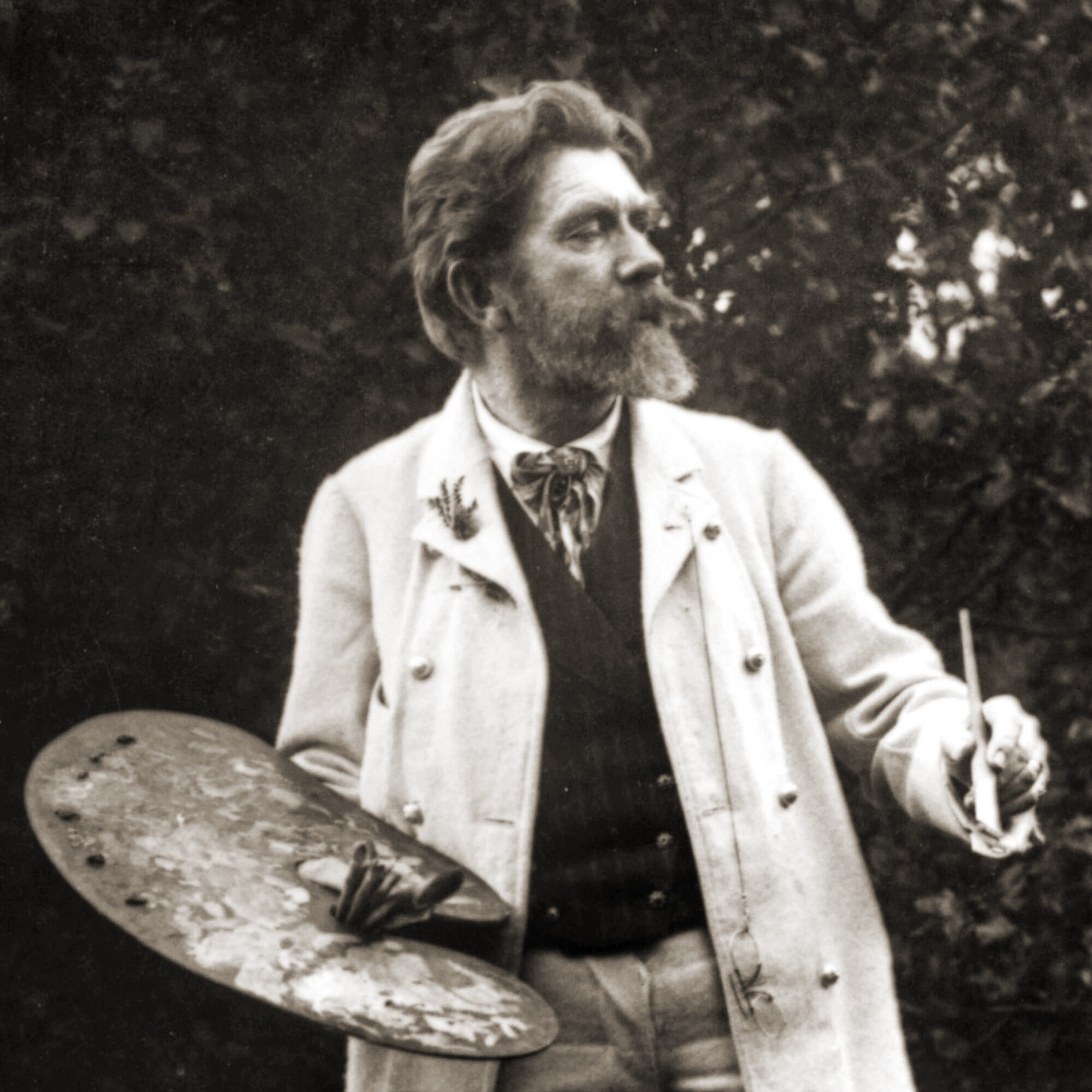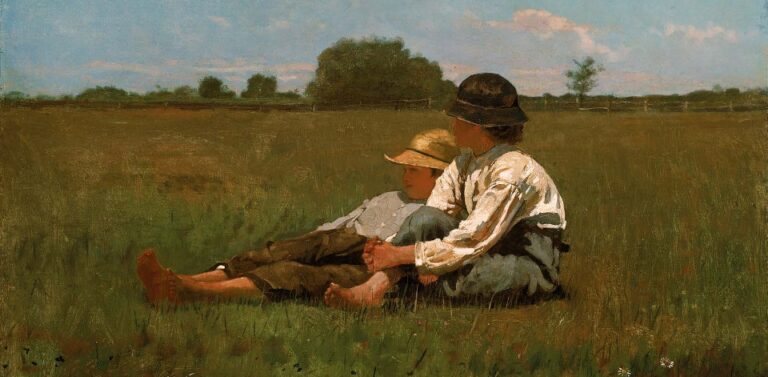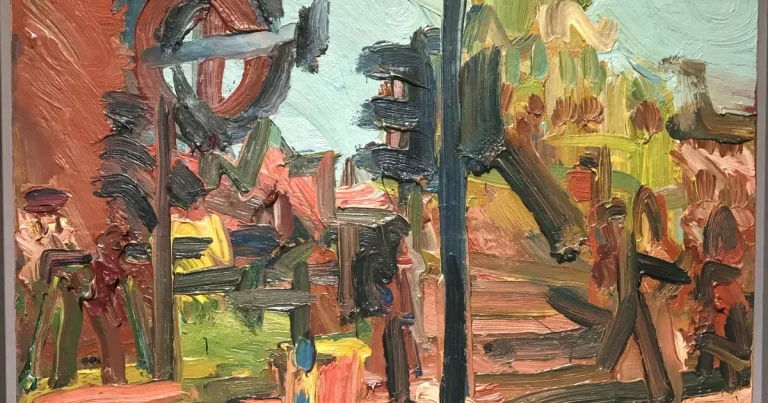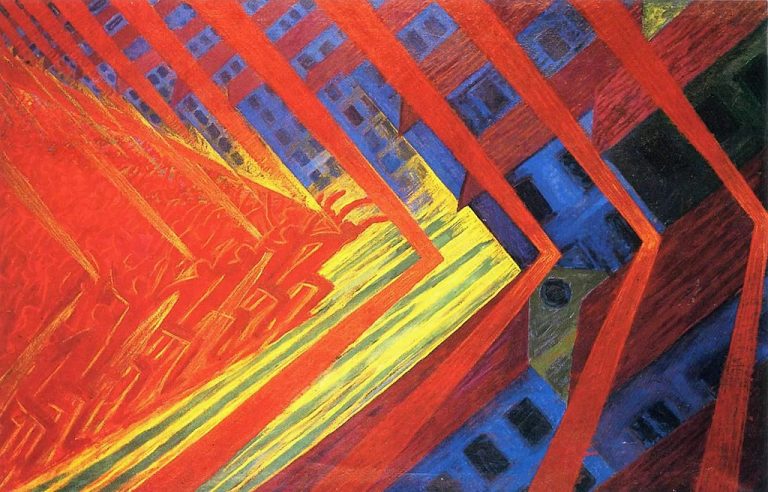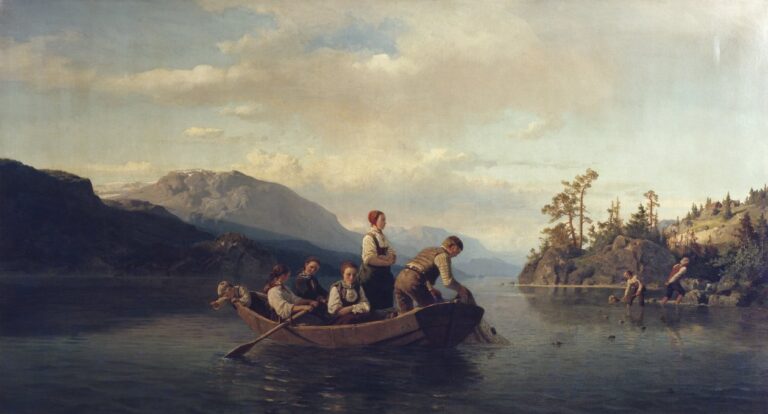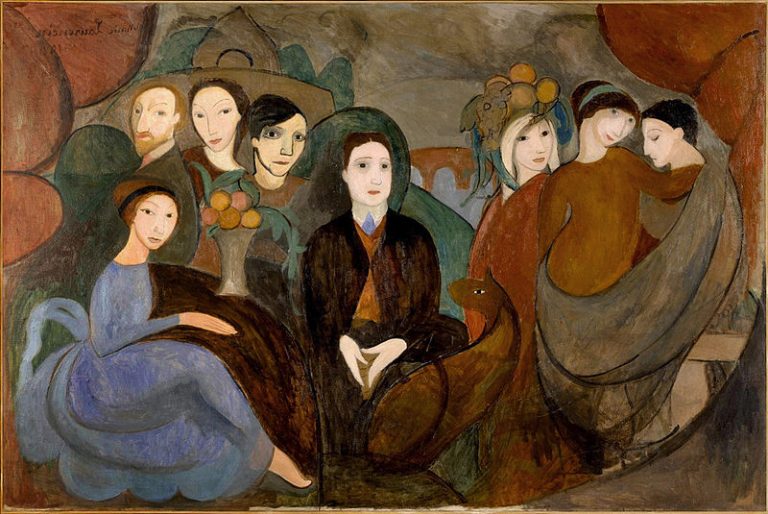Peder Severin Krøyer: Painter of Danish Coastal Scenes and Skagen Landscapes
Born: 23 July 1851, Stavanger, Sweden-Norway
Death: 21 November 1909, Skagen, Denmark
Mouvement artistique : Impressionnisme
Nationalité : Danois
Teacher: Frederik Vermehren
Institution: Royal Danish Academy of Fine Arts
Peder Severin Krøyer: Painter of Danish Coastal Scenes and Skagen Landscapes
Early Life and Education of P.S. Krøyer
Peder Severin Krøyer’s journey from his Norwegian birthplace to becoming one of Denmark’s most celebrated painters was shaped by his exceptional early artistic training and international experiences.
Born in Stavanger: The Norwegian Roots
Peder Severin Krøyer was born on July 23, 1851, in Stavanger, Norway. His mother was Ellen Cecilie Gjesdal, but he was not raised by her.
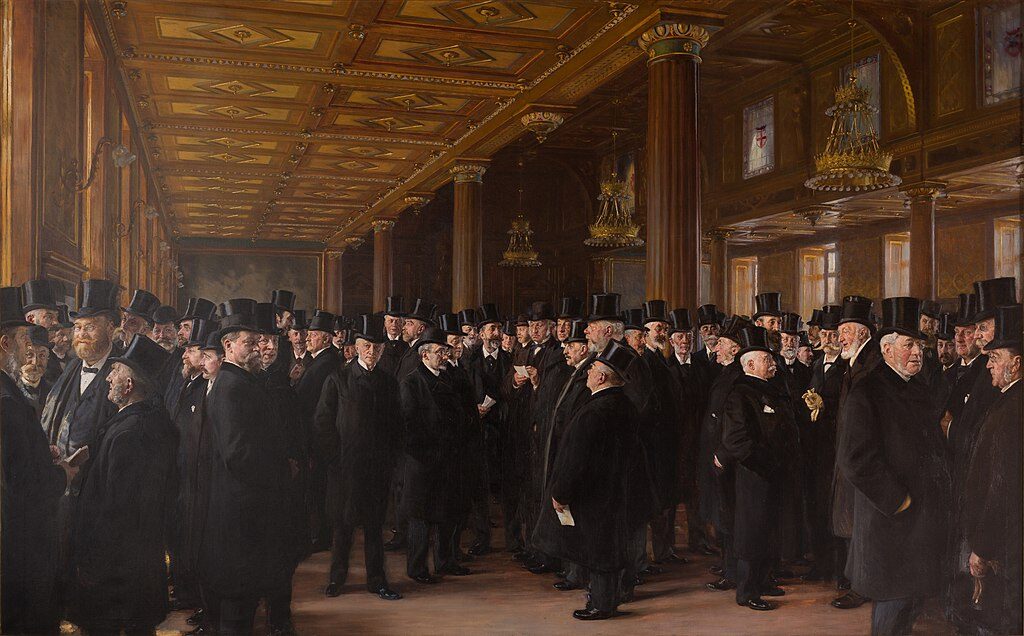
From the Bourse of Copenhagen, 1895, by Peder Severin Krøyer
Instead, young Krøyer was raised by his aunt Bertha Cecilie and her husband. This arrangement became formative for his development and future direction.
His artistic talent emerged remarkably early. By the age of nine, he was already receiving private art lessons, showing the exceptional ability that would define his career.
Artistic Training at the Danish Art Academy
Krøyer’s formal education took place at the Royal Danish Academy of Fine Arts in Copenhagen. He moved to Denmark in his youth, beginning his transformation from Norwegian-born to Danish painter.
His time at the Academy proved crucial in developing his technical skills and artistic vision. Under rigorous training, he mastered traditional painting techniques while beginning to develop his distinctive style.
The Copenhagen art scene became his new home. The Academy’s structured approach to artistic training provided Krøyer with the solid foundation needed for his later innovations in light and color.
Formative Years Abroad in France and Italy
Following his Danish education, Krøyer expanded his artistic horizons by traveling extensively. Paris became particularly significant to his development during the late 19th century.
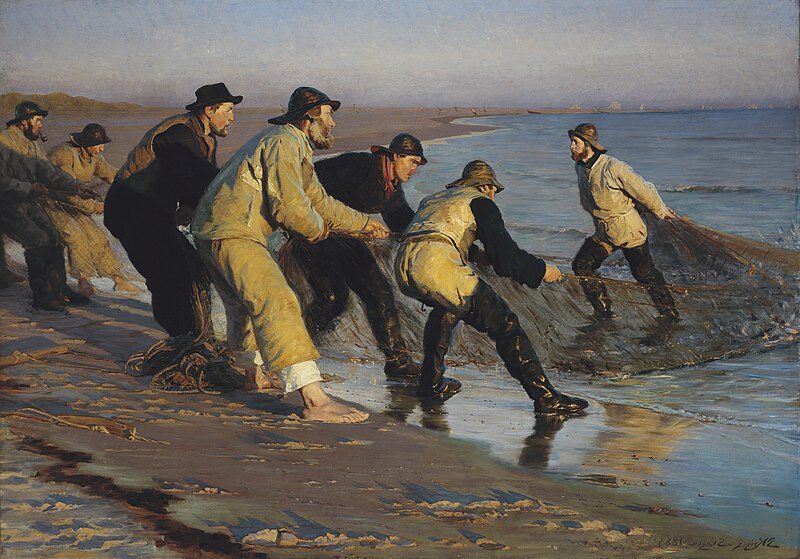
Fishermen Hauling Nets, North Beach, Skagen, 1883
In France, he absorbed the influences of Impressionism and the avant-garde movements transforming European art. The French approach to light and outdoor painting would deeply influence his later coastal scenes.
Italy also played a vital role in his artistic journey. The Mediterranean light and landscapes offered new perspectives that would later inform his famous paintings of Danish beaches and social gatherings.
These international experiences transformed Krøyer from a formally trained academic painter into an artist who masterfully combined technical precision with innovative approaches to light and atmosphere.
Krøyer’s Artistic Career and Impact
Peder Severin Krøyer became one of Denmark’s most celebrated painters, known for his masterful portrayal of light and his significant contributions to the Skagen artists‘ colony. His work bridged naturalism and impressionism while capturing the unique quality of Scandinavian coastal light.
Skagen Period: Joining the Artist Colony
Krøyer first visited Skagen in 1882 and quickly became captivated by the fishing village’s distinctive light and landscape. He soon established himself as a central figure among the Skagen Painters, a group of Nordic artists who gathered in this remote Danish peninsula.

Loggia in Ravello, 1890, by Peder Severin Krøyer
The colony included notable figures like Anna and Michael Ancher, Carl Locher, and Viggo Johansen. Krøyer’s technical skill and charismatic personality made him an influential leader within the community.
His work during this period focused on capturing Skagen’s unique atmospheric conditions, particularly the “blue hour” – the magical twilight time when sea and sky seemed to merge. These paintings showcased his remarkable ability to capture lumière naturelle.
Notable Works: Portraits to Impressionist Landscapes
Krøyer produced an impressive range of works spanning different styles and subjects. His beach scenes became particularly famous, including “Summer Evening on Skagen’s Beach” (1893), which depicted his wife Marie walking with Anna Ancher along the shoreline.

Summer Evening on Skagen’s Southern Beach with Anna Ancher and Marie Krøyer, 1893
His portraits demonstrated exceptional technical skill. Krøyer painted many of his fellow artists and fishermen of Skagen, capturing both their physical likeness and inner character.
“Hip, Hip, Hurrah!” (1888) remains one of his most celebrated works, showing a lively gathering of the Skagen artists. The painting exemplifies his mastery of light, composition, and the ability to convey social dynamics.
Krøyer’s landscapes show impressionist influences while maintaining a distinctly Nordic sensibility. His beach scenes with bathers and fishermen became iconic representations of Danish coastal life.
Influence and Relationships Within the Artists’ Community
Krøyer fostered a collaborative environment among the Skagen Painters through his sociable nature and artistic leadership. His marriage to Marie Krøyer (née Triepcke), who was also a painter, added to his connections within artistic circles.
He maintained friendships with international artists and brought cosmopolitan influences to Skagen. Having studied in Paris, Krøyer introduced French impressionist techniques while adapting them to Nordic themes and light conditions.
The relationships between Krøyer and fellow artists like Christian Krohg, Eilif Peterssen, and Laurits Tuxen enriched the artistic exchange at Skagen. They often painted together outdoors and critiqued each other’s work.
Artistic Legacy and Modern Relevance
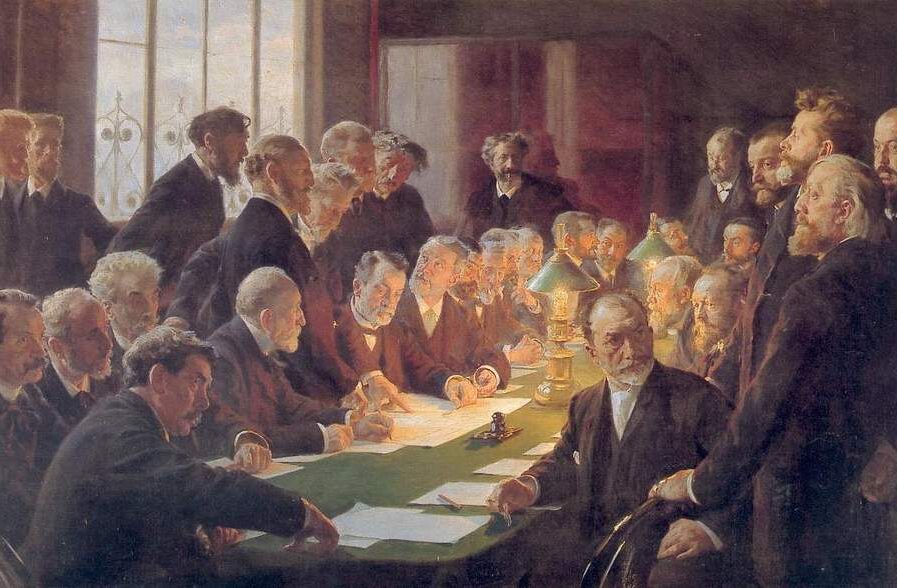
Committee for the French Art Exhibition in Copenhagen 1888, 1888
Peder Severin Krøyer’s influence extends far beyond his lifetime, shaping Nordic art traditions while continuing to captivate contemporary audiences through various mediums and technological innovations.
Krøyer’s Contribution to Nordic Art
P.S. Krøyer stands as a cornerstone figure in Nordic art history. As the unofficial leader of the Skagen Painters group, he helped establish a distinctive Scandinavian artistic identity in the late 19th century.
His masterful technique for capturing natural daylight, particularly the unique blue-toned evening light of Skagen (known as “the blue hour”), created a signature style that influenced generations of Nordic artists.
Krøyer’s profound understanding of light and atmosphere remains relevant to modern painters. His ability to convey emotion through environmental elements rather than just facial expressions demonstrates a profondeur psychologique that resonates with contemporary artistic approaches.
Museums across Denmark and beyond continue to highlight his works as essential viewing for understanding the evolution of Nordic painting traditions.
Reproduction and Customization in Today’s Art Market
Krøyer’s paintings have found new life in today’s art reproduction market. His most famous works, including beach scenes and portraits featuring roses, appear on various mediums from traditional canvas pictures to digital prints.

In the Store When There Is No Fishing, 1882
Art print companies offer Krøyer’s pieces in multiple sizes and formats, allowing collectors to match specific interior design needs. Many services now provide customization options, from frame selection to substrate materials.
Canvas reproductions of Krøyer’s work remain particularly popular for their textural quality that mimics original paintings. High-quality scanning technology enables reproductions that capture the subtle color variations and brushwork details that define his style.
The accessibility of these reproductions has introduced his work to audiences who might never visit the museums housing his originals.
Interplay of Art and Technology: Augmented Reality
Augmented reality applications now offer innovative ways to experience Krøyer’s paintings. Museum apps allow visitors to point devices at reproductions to reveal details about his techniques or historical context.
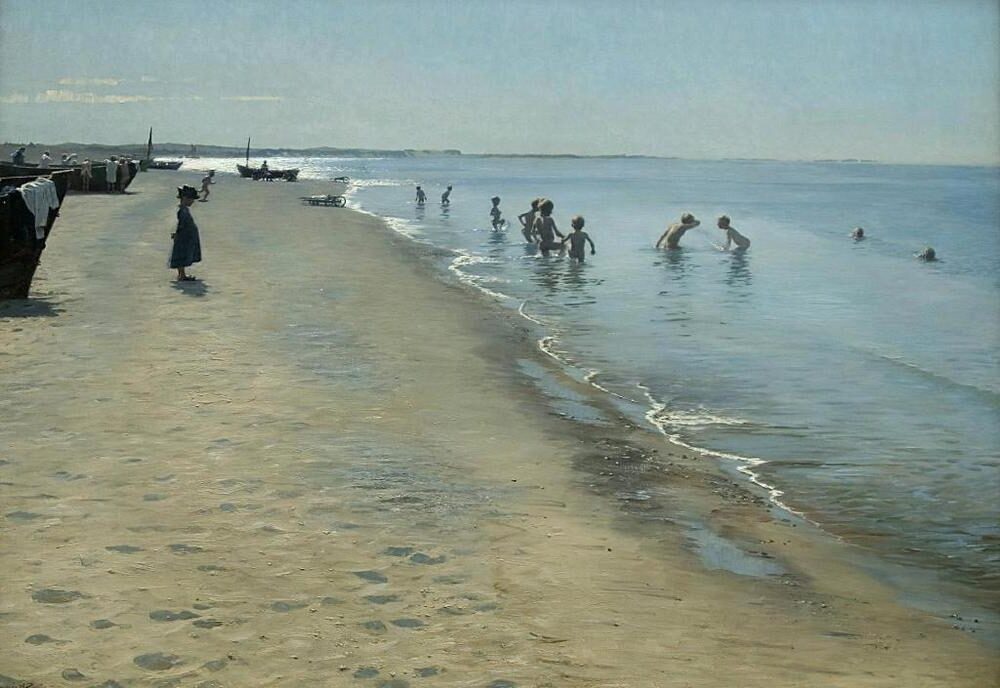
Summer Day on Skagen’s Southern Beach, 1884
Some digital platforms enable users to virtually “place” Krøyer’s paintings in their homes before purchasing reproductions, helping visualize how his distinctive use of light might interact with actual living spaces.
Educational AR tools deconstruct his famous paintings layer by layer, demonstrating how the Danish painter built compositions and applied his characteristic brushwork to achieve atmospheric effects.
These technological innovations make Krøyer’s work more accessible and interactive, introducing new generations to his artistic vision while preserving the essence of his contribution to art history.
Questions fréquemment posées
Peder Severin Krøyer revolutionized Scandinavian art through his distinctive painting style and contributions to the Skagen artists’ colony. His masterful handling of light and ability to capture everyday scenes earned him international recognition.
What are the notable characteristics of Peder Severin Krøyer’s painting style?
Krøyer combined elements of realism and impressionism in his work. His paintings featured exceptional light effects, particularly his ability to capture the unique blue twilight of Nordic summers.
He was known for his skillful portrayal of people in natural settings and everyday scenes. His brushwork varied from precise details to looser, more impressionistic strokes depending on the subject.
Krøyer’s color palette often emphasized blues, whites, and golden tones to reflect the coastal environment of Skagen. His technical precision came from his formal academic training, which he blended with more modern approaches.
Which painting by Krøyer is considered his masterpiece, and why?
“Summer Evening on Skagen’s Beach” (1893) is widely regarded as Krøyer’s masterpiece. The painting depicts his wife Marie and friend Anna Ancher walking along the shoreline at dusk.
The work exemplifies Krøyer’s mastery of the “blue hour” – the distinctive Nordic twilight that bathes everything in a luminous blue light. His ability to capture this atmospheric effect while maintaining the emotional connection between the figures demonstrates his technical and artistic brilliance.
The painting perfectly represents his talent for combining natural light, human figures, and the coastal landscape of Skagen into a harmonious composition.
How did Peder Severin Krøyer contribute to the Skagen Painters’ colony?
Krøyer arrived in Skagen in 1882 and quickly became a central figure in the artists’ colony. His international reputation and connections helped attract attention to the group and its work.
He brought sophisticated technical skills and knowledge of current European art trends to the community. Krøyer’s presence elevated the colony’s artistic output and helped establish Skagen as an important art center.
He created numerous paintings depicting the social life of the colony, documenting the gatherings and interactions between artists. These works serve as both artistic achievements and historical records of this important cultural movement.
What influence did the Skagen artists’ community have on Scandinavian art?
The Skagen artists shifted Scandinavian painting away from academic traditions toward more naturalistic approaches. They pioneered outdoor painting in the region, focusing on local landscapes, light conditions, and everyday subjects.
Their work helped establish a distinctive Scandinavian artistic identity that celebrated the unique qualities of northern light and landscapes. The colony represented a significant move toward modernism while maintaining connections to regional traditions and subjects.
The Skagen Painters, with Krøyer at the forefront, brought international attention to Danish art at a time when national identity was particularly important in Scandinavian culture.
In what ways did Krøyer’s work depict the unique lighting of the Scandinavian landscape?
Krøyer became famous for capturing the “blue hour” in his evening beach scenes. He masterfully rendered the soft, diffused light of Nordic summers where the sun barely sets.
His paintings showed remarkable sensitivity to the reflective qualities of light on water, sand, and skin. He developed specific techniques to depict how northern light creates distinctive shadows and highlights.
Krøyer often used contrasts between warm interior light and cool outdoor light in his social scenes. His understanding of light as both a physical phenomenon and emotional element makes his work immediately recognizable.
How has Peder Severin Krøyer’s legacy been preserved or commemorated in modern times?
The Skagens Museum in Denmark houses the largest collection of Krøyer’s works. His former home in Skagen has been preserved as a museum, allowing visitors to see the environment that inspired his paintings.
Major retrospective exhibitions of his work continue to be held throughout Scandinavia and Europe. Art historians recognize him as a pivotal figure in the development of modern Scandinavian painting.
His paintings command high prices at auctions and are sought after by major museums worldwide. Krøyer’s distinctive depictions of light continue to influence contemporary Scandinavian painters.

